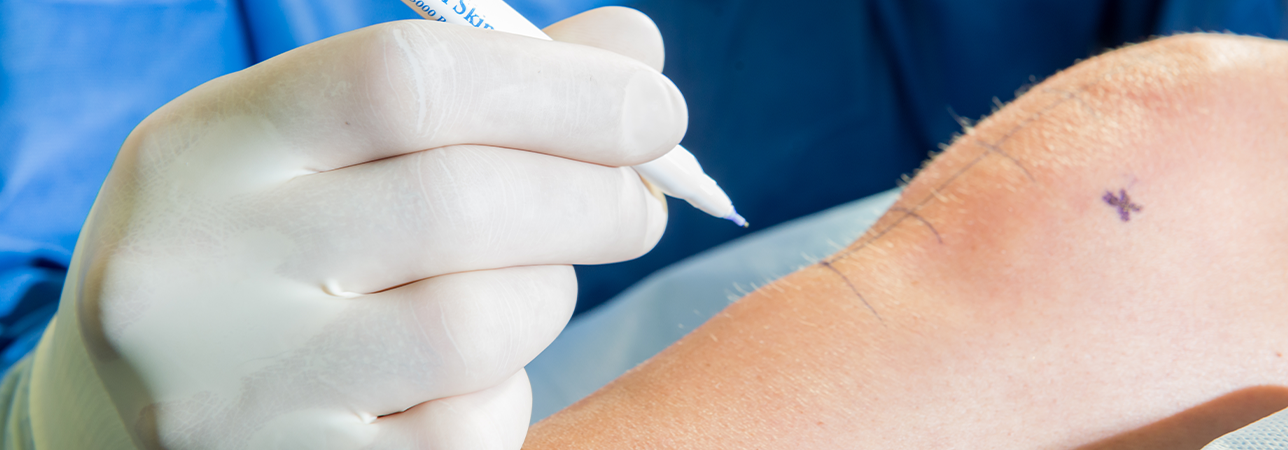close search

Knee arthroscopy (knee joint endoscopy) is a minimally invasive surgical procedure for diagnosing and treating damage to the knee joint. The instruments are inserted into the joint through small incisions in the skin.
In addition to diagnosis, arthroscopies also enable the gentle treatment of e.g. meniscus and cruciate ligament tears as well as the cleaning and flushing of infections or inflammations.
Procedure: Arthroscopy is a minimally invasive surgical procedure that tends to cover minor injuries. The instruments are inserted into the joint through small incisions in the skin.
Benefits: As knee arthroscopy is usually a relatively low-stress procedure, neither the surgery nor the aftercare is time-consuming.
Treatment: Arthroscopy can be used to diagnose or treat several joint injuries such as meniscus damage, cruciate ligament injuries, early stages of osteoarthritis, and more.
Aftercare: Aftercare includes exercises to strengthen and mobilise the knee joint, as well as regular visits to the physiotherapist.

Knee arthroscopy is performed via two small skin incisions: one is used to insert an optical instrument with a camera into the joint, the other to insert the surgical elements. A special fluid is injected into the joint for the procedure: This enables a better view via the camera to better examine and assess the inside of the joint (the surgical field).
Arthroscopy takes between 45 and 90 minutes and is performed in an operating room. The operation is performed under partial anaesthesia.
Arthroscopy is used when conservative measures have not been sufficiently successful. Arthroscopy can be used to treat the following injuries:
Arthroscopy is a minimally invasive surgical procedure. It is a very gentle procedure. The joint stress is significantly lower than with an open surgical procedure.
Compared to open surgery, arthroscopy has the following advantages:
Knee arthroscopy is a low-risk, routine procedure. However, as it is a surgical procedure, the following complications can occasionally occur:
In rare cases, a vascular and nerve regulation disorder called Sudeck's syndrome can also occur.

Aftercare depends on the type of surgery. After a diagnostic arthroscopy or a minor procedure, the knee may quickly regain strength. After cruciate ligament or meniscus surgery, it can take up to three months before the joint is fully recovered.
Aftercare includes exercises to strengthen and mobilise the knee joint, as well as regular visits to the physiotherapist.